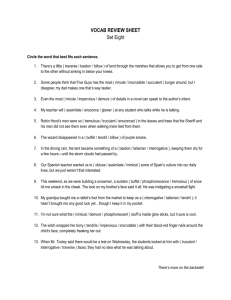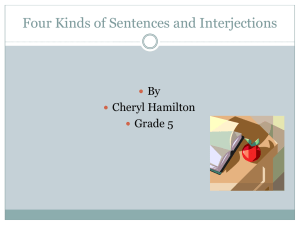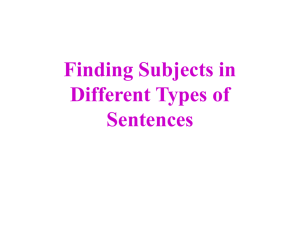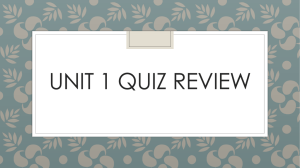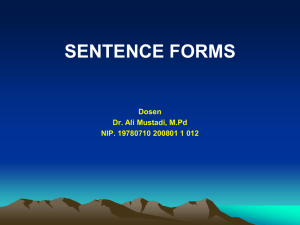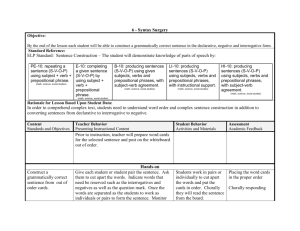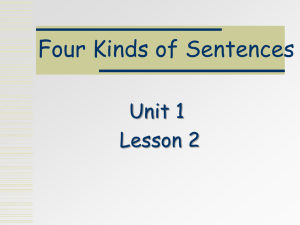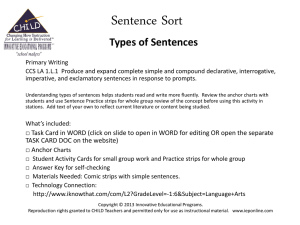Old Spanish sí as an interrogative particle: Comparative Evidence
advertisement
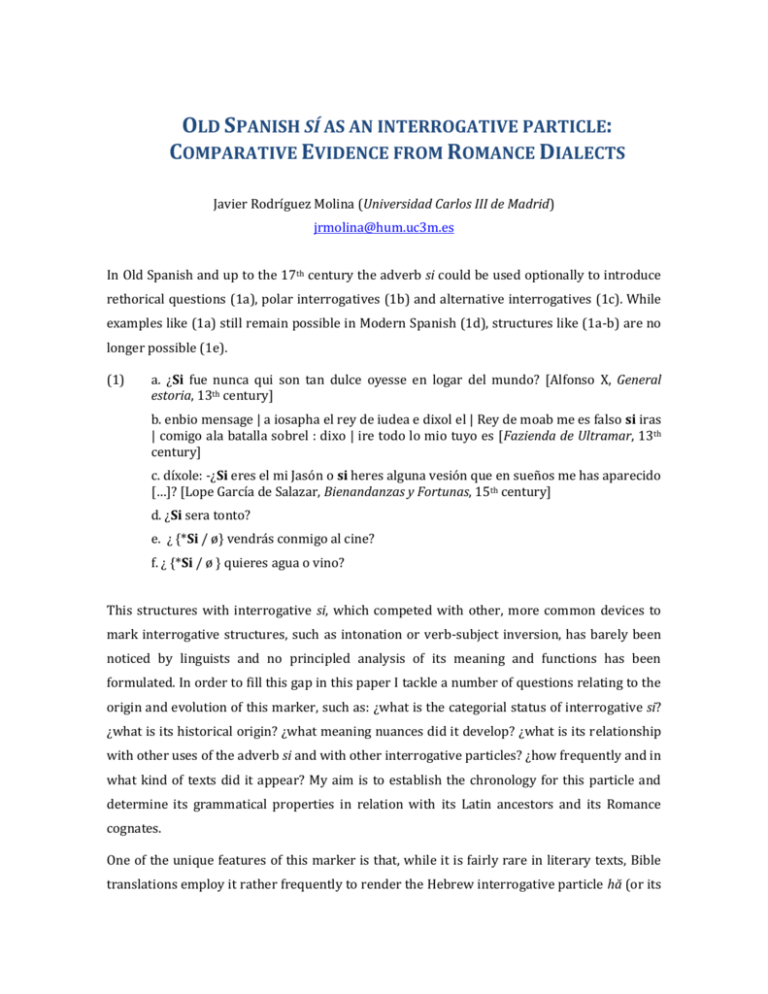
OLD SPANISH SÍ AS AN INTERROGATIVE PARTICLE:
COMPARATIVE EVIDENCE FROM ROMANCE DIALECTS
Javier Rodríguez Molina (Universidad Carlos III de Madrid)
jrmolina@hum.uc3m.es
In Old Spanish and up to the 17th century the adverb si could be used optionally to introduce
rethorical questions (1a), polar interrogatives (1b) and alternative interrogatives (1c). While
examples like (1a) still remain possible in Modern Spanish (1d), structures like (1a-b) are no
longer possible (1e).
(1)
a. ¿Si fue nunca qui son tan dulce oyesse en logar del mundo? [Alfonso X, General
estoria, 13th century]
b. enbio mensage | a iosapha el rey de iudea e dixol el | Rey de moab me es falso si iras
| comigo ala batalla sobrel : dixo | ire todo lo mio tuyo es [Fazienda de Ultramar, 13th
century]
c. díxole: -¿Si eres el mi Jasón o si heres alguna vesión que en sueños me has aparecido
[…]? [Lope García de Salazar, Bienandanzas y Fortunas, 15th century]
d. ¿Si sera tonto?
e. ¿ {*Si / ø} vendrás conmigo al cine?
f. ¿ {*Si / ø } quieres agua o vino?
This structures with interrogative si, which competed with other, more common devices to
mark interrogative structures, such as intonation or verb-subject inversion, has barely been
noticed by linguists and no principled analysis of its meaning and functions has been
formulated. In order to fill this gap in this paper I tackle a number of questions relating to the
origin and evolution of this marker, such as: ¿what is the categorial status of interrogative si?
¿what is its historical origin? ¿what meaning nuances did it develop? ¿what is its relationship
with other uses of the adverb si and with other interrogative particles? ¿how frequently and in
what kind of texts did it appear? My aim is to establish the chronology for this particle and
determine its grammatical properties in relation with its Latin ancestors and its Romance
cognates.
One of the unique features of this marker is that, while it is fairly rare in literary texts, Bible
translations employ it rather frequently to render the Hebrew interrogative particle hă (or its
Late Latin counterparts num and numquid). For this reason, the use of parallel versions is
particularly useful in studying this particle, as the medieval translations of the Bible into Old
Spanish (now easily accessible thanks to the Biblia Medieval corpus) provide hundreds of
examples of interrogative si next to their Latin or Hebrew sources and side-by-side with the
Old Spanish equivalents in the other versions.
Likewise, I have obtained general information on the coding of interrogative constructions in
other the languages, both in the typological literature (Siemund 2001, Köning & Siemund
2007) and in Romance Linguistics Literature. A microcomparative analysis of Modern and
Medieval Romance Dialects reveals a widespread use of interrogative particles absent in
Romance Standarn Languages, like Sardinian a, Romanian au, Old Occitan si, Old French si, et
and enne or Tuscan o, whose grammatical properties could cast new light on the Old Spanish
interrogative particle si.
My conclusions may be summarized as follows:
a) Old Spanish si was used as an interrogative particle in all kinds of interrogative structures
(polar interrogatives, alternative interrogatives and rhetorical questions, see Siemund 2001),
a usage that, to date, has not been described in the linguistic literature.
b) This si is morphologically an adverb, and grammatically it behaves as a Wh- element
associated with the left periphery. The typological analysis reveals how it shares properties
with interrogative particles and interrogative words in other languages.
c) These structures have a Latin origin and have cognates in other Romance languages, but in
the Old Spanish achieved greater success possibly due to the influence of Hebrew marker hă
in biblical translation.
d) This interrogative particle declines and all but disappears after the seventeenth century.
References
König, Ekkehard and Siemund, Peter. 2007. Speech Acts Distinctions in Grammar. In: Timothy
Shopen (ed.), Language Typology and Syntactic Description. Vol. I. Cambridge:
Cambridge University Press.
Siemund, Peter 2001. Interrogative Constructions. In: Martin Haspelmath, Ekkehard König,
Wulf Oesterreicher, and Wolfgang Raible (eds.), Language Typology and Language
Universals, pp. 1010–1028. Berlin: Mouton de Gruyter.
